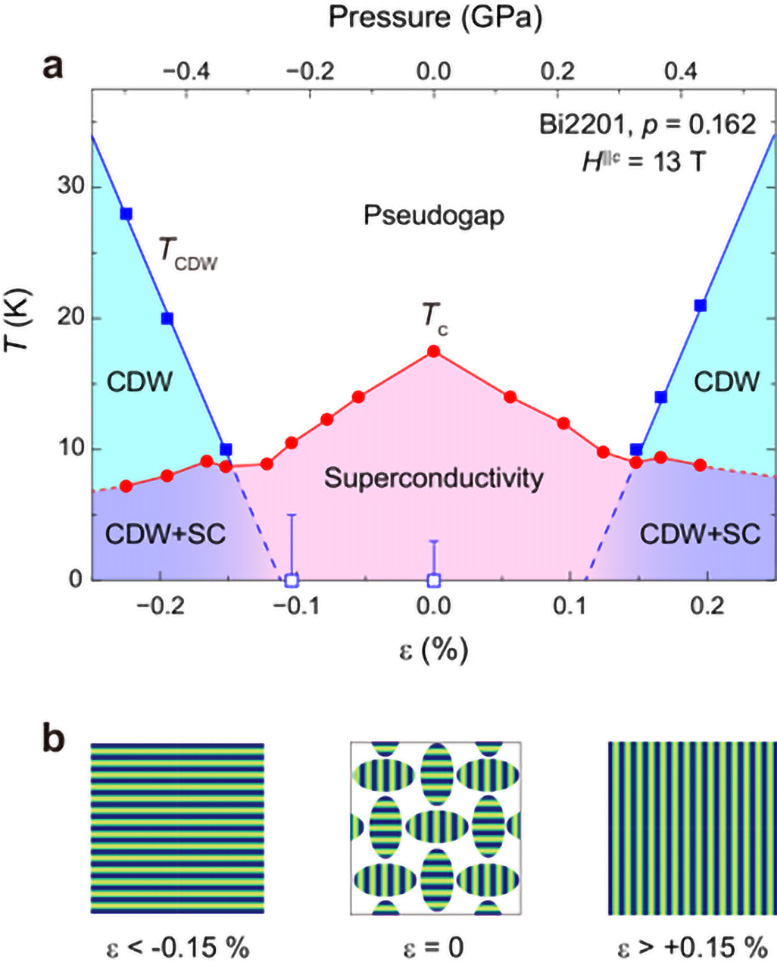A recent study led by researchers from Okayama University has uncovered new insights into high-temperature superconductivity in cuprates, revealing that uniaxial strain can induce a long-range charge density wave order, thereby providing valuable information for the development of more efficient superconducting materials. Credit: SciTechDaily.com
Researchers have discovered strain-induced long-range charge-density-wave order in a high-temperature superconductor, illuminating the underlying mechanisms.
Superconductors are materials capable of conducting electricity without any resistance when they are cooled below a specific temperature known as the critical temperature. These materials are used in various applications such as power grids, maglev trains, and medical imaging equipment. High-temperature superconductors, which operate at higher critical temperatures than conventional superconductors, hold great promise for enhancing these technologies. Nonetheless, the underlying mechanisms of their superconductivity are not yet fully understood.
Copper oxides or cuprates, a class of high-temperature superconductors, exhibit superconductivity when electrons and holes (vacant spaces left behind by electrons) are introduced into their crystal structure through a process called doping. Interestingly, in the low-doped state, with less-than-optimal electrons required for superconductivity, a pseudogap –a partial gap in the electronic structure– opens. This pseudogap is considered a potential factor in the origin of superconductivity in these materials.

a. The results show that superconductivity (SC) and long-range CDW can coexist while increasing strain suppresses superconductivity and enhances CDW order. b. At a strain of 0.15%, short-range CDW order transitions into long-range CDW order. Credit: Shinji Kawasaki from Okayama University https://www.nature.com/articles/s41467-024-49225-w
Additionally, previous studies have revealed a long-range charge density wave (CDW) order, in the low-doped regime of cuprates that breaks the crystal symmetry of the copper oxide (CuO2) plane. CDW is a repeating wave-like pattern of electrons that affects the material’s conductivity. This symmetry breaking is significant as superconductivity has been known to arise inside or near symmetry-broken states. Moreover, in the bismuth-based cuprate superconductor, Bi2Sr2-xLaxCuO6+δ (Bi2201), it has been shown that strong magnetic fields can induce a long-range symmetry-breaking CDW order. Despite extensive research, the exact role of these phenomena in the occurrence of superconductivity in cuprates is still not known.
In a new study, a team of researchers led by Associate Professor Shinji Kawasaki from the Department of Physics at Okayama University, Japan investigated the origin of high-temperature superconductivity in the pseudogap state of cuprates using a novel approach. Prof. Kawasaki explains, “In this study, we have discovered the existence of a long-range CDW order in the optimally doped Bi2201, induced by tensile-compressive strain applied by a novel piezo-driven uniaxial strain cell, which deliberately breaks crystal symmetry of the CuO2 plane.” Their findings were published in the journal DOI: 10.1038/s41467-024-49225-w
The study was funded by JSPS KAKENHI, and the Murata Science and Education Foundation (S.K.).




















Discussion about this post